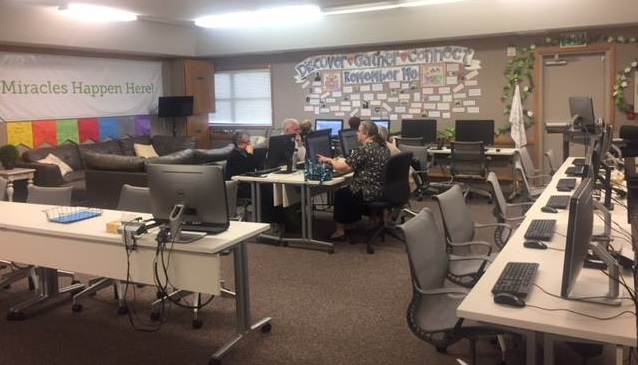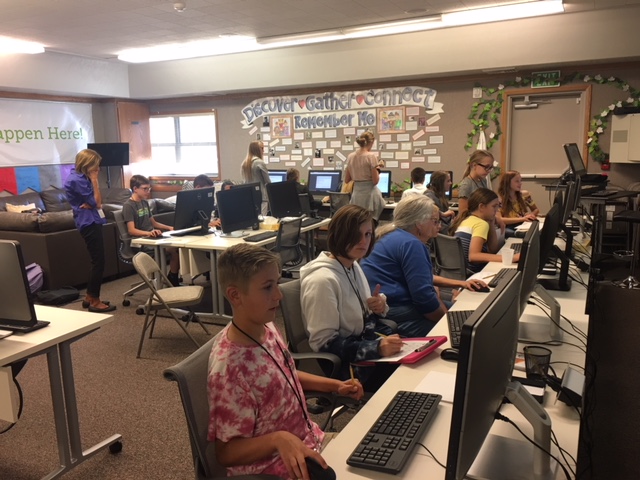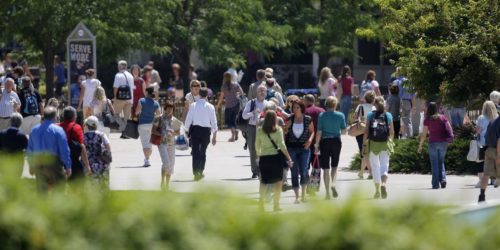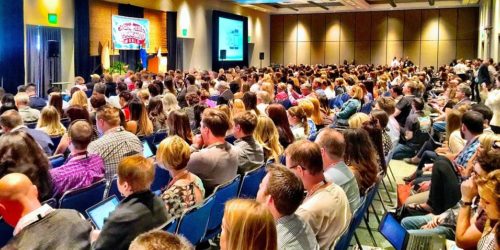Setting Up for Success
Note: Most of this article was published previously in our Trainers, Consultants, and Directors Facebook page. It is republished here due to the increased interest it has generated for trainers and learners.
When we teach traditional family history computer classes, we typically set up the class with a presentation screen at the front and rows of computers filling the rest of the room.
That usually does the trick for group instruction in a computer lab, but what if you need to do individual mentoring with a group? Walking back and forth between aisles to help people can be a pain, not to mention bumping into chairs, people, and power strips.
Recently, the Sandy Granite family history center came up with an interesting solution. There are two rooms in the center: one is set up as a traditional computer lab, and the second, until a few weeks ago, was an overflow room with a few computer tables. The tech staff re-configured that room for mentoring, using an ingenious setup.
Starting from the middle of the room, there is a pod of four computers, 2 x 2, facing each other. Around the middle pod is a spacious walking aisle. The outer edge of the room has three banks of computer tables: one in front, one on the left, and one on the right. You can see this layout in the picture below. The front of the lab is to the right; you can see the instructor station in the upper right, with the presentation screen just out of view to the right.

There are several mentoring advantages here: 1) Learners can get to any seat in the room easily; 2) the instructor can quickly get to any computer to provide mentoring help; and 3) learners can also walk around and see what others are doing, or get help from others.
When the instructor needs to address the entire group, seats can easily be swiveled to face the needed direction. You can see another view of the setup in the picture below—this time full of learners, with mentors each assigned to several computers and learners for help.






